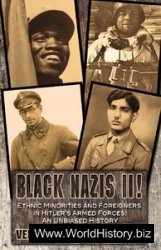Silver speeded up the development of a mestizo society in Latin America, and it also
speeded up the development of global trading connections. Silver and gold from
Mexico and Peru went to Spain in armed convoys, where they supplied the Spanish
monarchy with one-fourth of its total income. Beginning in the 1560s several
huge silver-ships also sailed every year from Acapulco in Mexico to Manila in the
Spanish colony of the Philippines. There the silver was traded to Chinese merchants
for silk, porcelain, spices, and other luxury goods, to be sold to European mineowners
and city-dwellers in Latin America or carried still further to wealthy nobles
in Spain. Those Chinese merchants also bought Japanese silver, and took it all to
China, where the economy was expanding and needed more and more silver to
make coins. Silver taken to Spain paid for equipment and supplies for both mines
and sugar plantations in the colonies, and also for guns and tools taken to West Africa,
where they were traded for slaves. American silver and gold contributed to the
infl ationary “price revolution,” and often ended up with German bankers who had
loaned money to Charles V to fi nance his election as emperor or to later Spanish
kings to fi nance their wars.
Global connections were not just a matter of metals and money, however, but also
the intentional and unintentional sharing of many things, for European voyages linked
parts of the world that had been cut off from each other for tens of thousands of years.
These links were sometimes disastrous, as in the spread of infectious diseases to people
in the Americas who had no immunity. But other links were very benefi cial. Food crops
and animals traveled both ways across the Atlantic and later the Pacifi c in what the
environmental historian Alfred Crosby termed the “Columbian exchange.” Europeans
brought horses, cattle, pigs, sheep, and chickens from Europe to the Americas, where
they often escaped into the wild and thrived; a herd of a hundred cattle that the Spanish
abandoned in the grasslands of the Rio de la Plata area in what is now Argentina
grew within several decades to over 100,000. They also brought wheat, which grew
well on the plains of both North and South America, along with wine-grapes, apples,
and olives. From Africa they brought bananas, coffee, and coconuts. They took maize
and potatoes back to Europe, growing them fi rst as food for animals and gradually
as food for humans as well. Tomatoes, peppers, sweet potatoes, peanuts, and manioc
went from South America to Africa and Asia, as did pineapples and avocados. (About
30 percent of the foods eaten in the world today originated in the Americas.) This
exchange of plants and animals improved nutrition around the world, and allowed a
slow increase in the total global population, despite the tremendous loss of life because
of epidemic disease.
The Columbian exchange involved products that brought pleasure as well as nutrition.
We have already traced sugar’s travels from Asia to the Americas; chocolate, which
the Aztecs believed had been brought from paradise, went in the other direction. Both
the Aztecs and the Mayas cultivated the cacao beans from which chocolate is made,
and Cortés took them to Spain. Like the Aztecs, the Spanish developed the habit of
drinking cups of chocolate, which they sweetened with imported sugar. (Aztecs and
Mayas drank their chocolate, a word that comes from the Maya words for “sour water,”
unsweetened.) Drinking chocolate spread to France and England, where by the 1600s
people were also drinking coffee imported from Arabia and Africa, and by the 1650s tea
imported from India and China.
By the early 1600s global trade was providing another addictive substance along
with the caffeine found in chocolate, tea, and coffee – nicotine. Native Americans
grew and smoked tobacco long before Columbus, who took some tobacco seeds back
with him to Spain, where farmers began to grow tobacco for use as a medicine that
helped people relax. The French ambassador at Lisbon, Jean Nicot ( 1530–1600) – whose
name is the origin of nicotine and of the botanical name for tobacco, Nicotiana –
introduced the use of tobacco in France, originally in the form of snuff. English
merchants brought tobacco to the Ottoman Empire, where coffeehouses fi lled with
pipe smoke became popular places for men to gather. Ottoman religious leaders complained
that coffeehouses kept people away from their religious duties, and Sultan
Murad IV ( ruled 1623–40) outlawed both coffee and tobacco, but his measures were
ineffective.
Though products were exchanged in all directions, they were carried primarily in
western European ships. Europeans were one group among many in the Indian Ocean
and South China Sea, but elsewhere they came to dominate oceanic shipping. This
provided great profi ts, and allowed them to dictate the terms of trade even in areas
where they did not have colonial empires. This trade also stimulated the growth of
many industries in Europe, from ship-building to textiles, as Europeans increasingly
exported manufactured goods in exchange for unprocessed or partially processed raw
materials, such as sugar, precious metals, and timber.
The fi rst century of European colonization also had political effects, for the creation
of the fi rst global empires meant that arenas of confl ict and sources of power
were no longer confi ned to Europe itself. The conquest of the Americas initially glorifi
ed the Spanish ( and to a lesser degree the Portuguese) monarchy and the Catholic
Church; both acquired immense new lands to rule and people to govern. The wealth
brought by Spain’s overseas colonies made it the most powerful country in Europe
around 1600, a connection that was widely recognized, as English and French actions
to weaken Spain always involved cutting off trade with the Americas. Western
European countries came to view overseas possessions as essential adjuncts to their
military and economic power, which helped foster nationalism by encouraging a race
for trade, treasure, and colonies. English pirates – often dignifi ed by the term “privateer”
– were motivated primarily by a desire for wealth in their attacks on the Spanish
treasure fl eet and South American ports, but they often obtained the approval
of the English monarch, and were expected to provide a cut of their haul to the national
treasury. Sir Francis Drake ( 1543?–96), for example, the most famous of these
“sea dogs,” got money, ships, and eventually a knighthood from Queen Elizabeth.
He seized Spanish ships, commanded English warships against the Spanish Armada
in 1588, and looted Spanish towns in the Caribbean and on the north coast of South
America, termed the “Spanish Main.” On his trip around the world in the late 1570s,
he raided the west coast of South America, where the towns were completely unfortifi
ed. Drake began his career as a slave-trader, and ended it as a member of the House
of Commons.
Hatred of Spain was enhanced in the sixteenth and early seventeenth centuries by
stories that circulated orally and in print about Spanish atrocities in the New World.
This “Black Legend” ( in Spanish Leyenda Negra ) was based especially on the writings
of Bartolomé de Las Casas ( 1474–1566), a Spanish Dominican missionary who became
bishop of Chiapas in Mexico in 1544. Las Casas took part in royal investigations
into the treatment of Indians, and in response to assertions by various offi cials that
enslaving them was justifi ed because Indians were less than human, he published a
series of essays in 1552–3 detailing, condemning, and probably exaggerating Spanish
abuses. In Las Casas’s writings, all Indians were childlike innocents and all the
Spanish were violent, cruel, and greedy. His writings led to a royal prohibition of
the enslavement of Indians, though this was widely ignored, and may have played
a role in the increasing importation of African slaves, which Las Casas endorsed,
though he later regretted this. Translated into other European languages, often with
titles such as “The Tears of the Indians,” his writings provided a justifi cation for
New World conquests by other European nations and became a staple of Protestant
propaganda.




 World History
World History









